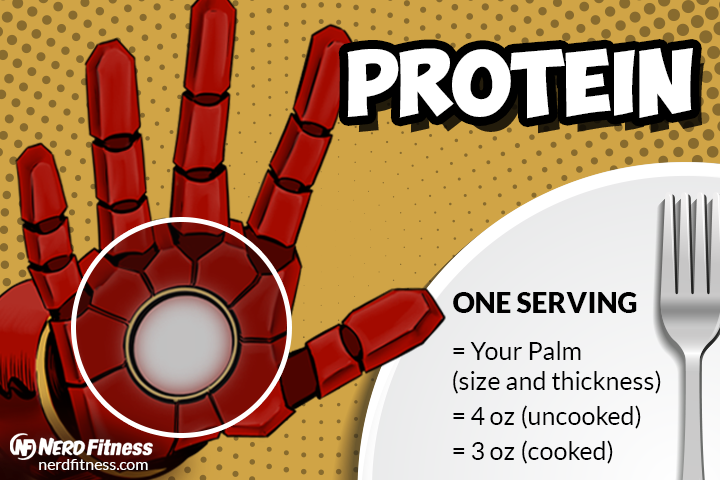Originally Posted At: https://breakingmuscle.com/feed/rss
http://www.marksdailyapple.com/
 Keto is unique compared to other diets because there is an objective marker that tells you if you’re on the right track. With an easy at-home test, you can confirm that you are, in fact, in a state of ketosis.
Keto is unique compared to other diets because there is an objective marker that tells you if you’re on the right track. With an easy at-home test, you can confirm that you are, in fact, in a state of ketosis.
Regular readers probably know I’m not a big data tracker. My energy, sleep, workout performance, stamina, and enjoyment of life tell me almost everything I need to know about how well I’m doing. Nevertheless, I get that some people love to play the self-quantification game. In some medical situations, measuring ketones is advisable, even necessary, as well. I’m not a total curmudgeon about it. Heck, I’ve been known to check in on my blood glucose and ketones from time to time.
If you’re thinking about testing, you should become familiar with the three different methods. Each has its own pros and cons. You’ll want to pick the option that’s right for you.
Stay on track no matter where you are! Instantly download your Primal and Keto Guide to Eating Out
Let’s back up and do a quick refresher on ketogenic diets. These are any diets where carbohydrate intake is restricted below about 50 grams of total carbs per day. When you restrict carbs, you are really restricting how much glucose the body has to meet its energy needs. Without much glucose coming in, the body needs an alternative fuel source, especially for the brain, which doesn’t run well on fat. That fuel source is ketones.
The liver produces ketones from fatty acids when insulin levels are low and liver glycogen (stored glucose) becomes depleted. This happens when you follow a very-low-carb diet, fast, or engage in sustained exercise.
When your liver is producing measurable amounts of ketones, you are said to be in ketosis. This is not to be confused with ketoacidosis, a potentially fatal medical emergency. Keto diets don’t lead to ketoacidosis because the body has a safeguard that prevents ketone levels from becoming dangerously high: insulin. When ketones rise, the pancreas releases insulin, which in turn hinders the release of fatty acids from stored body fat. Fewer fatty acids in the bloodstream mean less substrate (material) for the liver to turn into ketones.
This feedback mechanism keeps ketone levels in safe ranges unless your body can’t produce insulin. Individuals with type 1 diabetes and very advanced type 2 diabetes are at risk for developing ketoacidosis for this reason. Diabetics often monitor their ketones to make sure they are within safe ranges.
For the rest of us, measuring ketones is just a way of checking whether or not we are actually in a state of ketosis. We might want to know that for a number of reasons, discussed later.
In ketogenesis, fatty acids are metabolized in the liver to create ketone bodies. The primary ketone body is acetoacetate (AcAc), which can convert into beta-hydroxybutyrate (BHB). AcAc also spontaneously breaks down into a third ketone body, acetone.
The body primarily uses AcAc and BHB for energy. Although acetone can be converted into pyruvate, it’s generally considered a waste product.
There are three ways to test your ketones at home:
You can purchase urine ketone test strips online or in many pharmacies. They are cheap, costing only pennies per strip. Don’t confuse them with urine pH strips.
Simply collect your urine in a sample cup or pee directly on the strip. After a set time—usually 15 seconds, but some strips take longer—the end of the strip will change color. Compare the color on the strip to the key on the package to get your ketosis level. Rather than giving you an exact readout, the color tells you if your urine does not register any AcAc, or if it shows low, medium, or high levels.
It’s straightforward but not foolproof. For one, if you let the strip sit for too long before you interpret the results, the test can be inaccurate. Urine strips also tend to overestimate the amount of AcAc present and can give false positives.1 2 Results can be affected by how well hydrated you are, too.
Although urine tests are shown to correlate decently well with blood and breath tests in diabetics3 and people new to the keto diet,4 AcAc in the urine is considered “spillover.” When you first start a keto diet, your cells aren’t great at utilizing ketones, so some get excreted. You’re measuring ketones the liver made but the body can’t use. As you become more keto-adapted, there should be less spillover.
Most keto dieters do find that their urine ketones decline over time. That’s a good thing, indicating less waste; but it also means the urine tests become less useful. It’s very common for experienced keto dieters to have low or no measurable ketones in their urine despite having plenty in their bloodstreams.
Blood tests measure the level of BHB in the bloodstream. This is considered the gold standard in ketone testing. They require an initial investment in a meter, plus ongoing purchases of test strips. You also need a lancing device and sterile lancets to prick your finger and draw a droplet of blood. If you’re planning on testing several times a day, it can get expensive fast, not to mention your sore fingertips.
The two most popular meters in the U.S. are the Keto Mojo( ) and Precision Xtra. Both also measure blood glucose, but you need separate test strips. The Precision Xtra meter runs around $25 depending on where you purchase it. Ketone test strips cost about $1.20 each, and glucose test strips about $0.65.
) and Precision Xtra. Both also measure blood glucose, but you need separate test strips. The Precision Xtra meter runs around $25 depending on where you purchase it. Ketone test strips cost about $1.20 each, and glucose test strips about $0.65.
You can get a Keto Mojo starter kit on the company’s website that includes the meter, lancing device, 10 lancets, 10 ketone test strips, 10 glucose test strips, and a travel case for $59.99. Additional ketone test strips cost $49.50 for a 50-pack. Glucose test strips are $14.99 for a 50-pack. They also offer a Bluetooth connector for $9.95 that allows you to upload your test results to an app.
Your meter will give you a reading of 0 or “Lo” if you aren’t in ketosis. On a typical keto diet, you might be anywhere from 0.3 to around 2.0 mmol (millimole). Fasting and exercise can each drive BHB up to 4.0 mmol or higher. Ketoacidosis occurs above 10 mmol.
In The Art and Science of Low Carbohydrate Living, renowned researchers Jeff Volek and Stephen Phinney proposed that ketosis begins at 0.5 mmol. The designated 1.0 to 2.5 mmol as the “optimal ketone zone.” Don’t get too hung up on these numbers, though. Some individuals produce high levels of ketones on a normal keto diet, while others barely register any unless they fast or use exogenous ketones (which contain BHB). I have friends who have been strictly keto for years and consistently hover around 0.3 or 0.4 mmol. We don’t really understand why these individual differences exist. I’ve offered some hypotheses, but it’s still a bit of a mystery.
Anyway, higher numbers don’t mean that you’re doing better than the next person. In certain medical situations, such as for seizure control, high BHB levels are desirable. For the average person doing keto for weight loss or general wellness, there’s no evidence that it makes a big difference. More recently, Phinney and Volek have started to talk about the “effective therapeutic range”—where you can expect to reap benefits from being in ketosis—as being anywhere between 0.5 and 4.0 mmol.5
Breath tests measure acetone. Like AcAc and BHB, acetone travels in the bloodstream. The molecules are small enough to diffuse into the lungs, where they are exhaled. This is why some people develop the distinctive fruity or metallic smell also known as keto breath.
Breath meters measure acetone in parts per million (ppm). Everyone, no matter their diet, exhales a small amount of acetone. The average non-keto dieter might only register 1 ppm. Someone following a keto diet would normally have up to about 40 ppm. Fasting can drive breath acetone up to around 170 ppm. Ketoacidosis is indicated by breath acetone concentrations of 1,250 ppm.6
Breath acetone does reliably correlate with blood BHB. Multiple studies also show that acetone readings are correlated with weight loss when participants follow a calorie-restricted diet.7 This doesn’t mean that higher breath acetone readings somehow cause weight loss, though.
Acetone readings go up when the body is burning more fat, that’s true. That’s why they also go up after exercise, when the body is tapping into fat stores for energy. However, these devices can’t distinguish whether you’re burning body fat or the fat from your plate. Participants in these studies were burning body fat because they were in an energy deficit. Depending on how much fat you eat, you can maintain or even gain weight on a keto diet. Ketosis never guarantees body fat loss, no matter how you measure your ketones.
The biggest upside to breath testing is that once you have the meter, you can test as many times as you want each day for no additional cost per test. This is great for people who want to test multiple times per day.
Although breath testing does seem promising, there’s a catch. The research studies I reviewed all used mass spectrometry-based devices. These are sophisticated pieces of equipment that you won’t have at home. While there are quite a few handheld devices available online, it’s not clear how accurate they are.
The most popular device seems to be the Ketonix(R), which starts at $79. You blow into the device, which looks like a pen, and the ketone reading syncs with an app on your phone. Reviews suggest that it can take a while for the app to connect to the device and that it’s glitchy, so do your homework before purchasing. There is also the considerably more expensive LEVL device (prices aren’t currently listed on their website). In addition to the up-front cost, LEVL requires monthly sensor replacements that aren’t cheap, and it’s more finicky to use.
There’s no right or wrong time to test. For general tracking, the most important thing is that you test around the same time each day. Try to keep conditions the same, too. Ketone levels are affected by time of day, how recently you ate and what you ate, exercise, and a number of other factors. Don’t test right after a meal one day, at the end of a 16-hour fasting period the next day, and after a 10-mile run on the third day.
I think it makes the most sense to test first thing in the morning or at bedtime. If you consistently break your overnight fast at the same time, you can also test right before eating.
If you’re looking for high ketone readings to stay motivated, test at night. A test of 12 healthy men and women found that both blood and urine measurements were lowest at 10 a.m., following breakfast 8 Blood tests were otherwise fairly steady throughout the day, with a modest decline in the afternoon. Urine tests showed higher ketones as the day progressed, also with a small mid-afternoon dip. The highest levels occurred before bed, at 10 p.m.
No, but there are some reasons you might want to.
As I said up top, those using a ketogenic diet therapeutically might need to track ketone levels. For certain conditions like epilepsy, patients might aim for ketone levels of 4.0 mmol or higher.9 Some folks also monitor their glucose-ketone index (GKI). This ratio reflects the relative availability of the two fuels and is especially used in cancer treatment.10 A blood BHB measurement is required to calculate GKI.
You might want to track your ketones if you’re running an n=1 experiment. Maybe you want to see what happens when you eat more protein or carbs, or you’re gauging your reactions to certain foods.11 Athletes might test their ketones to dial in their fueling strategy.
I’ve also had readers tell me that tracking their ketones helps them stay motivated. That’s great as long as tracking doesn’t add stress or anxiety to your life. If you can absorb the information impartially, go for it. If a low ketone reading is going to send you into an emotional tailspin, it’s not worth it. Testing is not exact anyway. There’s always a margin of error.
Just remember that whether you’re trying to lose weight, live to 120, reduce inflammation, or whatever else, your diet is only one of many factors that play into your success. Chasing high ketones is almost never necessary. I know some people swear that they feel better above a certain level. If it’s true that they can feel a noticeable difference, though, they shouldn’t need to test for confirmation. Aim for a feeling, not a number.
Most of all, don’t let the results of any ketone test take precedence over your subjective experience. If you are firing on all cylinders—sleeping great, positive mood, lots of energy, feeling strong—who cares what your blood BHB is?
All that said, if you’re going to track ketones, I say don’t bother with the urine strips unless you’re only going to test for the first few weeks. If you’re planning on making it a regular thing, go ahead and invest in a blood meter. They seem to be more reliable than handheld breath meters at this point. They also measure blood glucose, which can be useful for a variety of reasons. If you don’t want to track, that’s fine too. It’s always an option later if you want more information.
Informal poll: How many of you who follow a keto diet track your ketones? What device(s) do you use? What’s your main purpose for tracking, and do you find it useful?
References
The post Measuring Ketones: What, When, Why, and How appeared first on Mark’s Daily Apple.
http://www.marksdailyapple.com/

Dear Mark,
You talk a lot about the evils of grains. I follow your logic on why a grain free diet is best, and I have seen weight loss and just feel better overall since heeding your advice. But there is one thing (well, more than one) that I don’t understand but hear about often. Could you explain what gluten intolerance is and why you should avoid gluten?
Excellent question. Even though we’re seeing gluten-free labeling more and more, it’s not always clear why gluten can be problematic. Because of cross-contamination, it’s not always obvious whether a food contains gluten or not. Further, gluten intolerance symptoms can masquerade as other conditions. Let’s break it all down.
Gluten is a large, water-soluble protein that creates the elasticity in dough. It’s found in grains such as wheat, rye, barley, triticale, and oats. These days it’s also found in additives like thickeners and fillers used in everything from lunch meat to soup to candy. You can also find gluten in beers and vinegars that have been fermented from gluten-containing grains.
If your body reacts when you eat gluten-containing foods, there’s a chance you may have gluten intolerance.
When an affected person eats or drinks something containing gluten, the protein initiates a kind of allergic reaction in the body, resulting in some level of inflammation. The reaction can vary significantly from person to person. Symptoms include:
Some gluten sensitive people show no symptoms, at least for a certain period of their lives.
In serious cases, gluten intolerance causes intestinal atrophy known as Celiac disease. Celiac disease is hereditary, and it is estimated that 1 in 10 people with a first-degree relative (parent or sibling) who has celiac disease will also have the condition.1 Unfortunately, not everyone who develops Celiac disease will have recognizable symptoms before the condition has wreaked serious havoc in the intestinal system by flattening of the intestinal villi and subsequently decreasing the area for nutrient absorption. For these people, Celiac disease often isn’t diagnosed until after effects of malnutrition have set in (lack of growth in children, diarrhea, stomach pain and/or bloating, vomiting, behavioral changes, etc.). In these cases, biopsies are often taken to assess the extent of damage and to aid diagnosis. Even if biopsies are normal, there is still the chance that nutrient absorption is impaired.
Thankfully, methods for diagnosing gluten sensitivity and related Celiac disease have improved in recent years as awareness has increased and more research has been done. Blood tests for specific antibodies have allowed physicians to diagnose the disease in many cases before much if any damage has occurred. Researchers are also beginning to test for antibodies in the intestinal tract, which may promise an even earlier diagnosis in at-risk individuals.
Gluten sensitivity or intolerance, once thought to be rare, is now believed to affect a third of the population. (Some believe this number is substantially higher.) Experts report that up to 100 million Americans will consume gluten-free food products over the course of a year.2 It’s considered a genetically influenced, life-long condition, with some relationship to autoimmunity.3 It can appear at any point throughout your lifetime, and sometimes doesn’t manifest itself until a person is in their thirties or even forties.
Given my stance on grains, I obviously suggest avoiding gluten. As mentioned, gluten intolerance is a very common condition and may be underestimated still. Given the relatively recent introduction of gluten (and all grains) into the human diet, gluten intolerance and the related Celiac disease are very unfortunate but not very surprising conditions. In addition to omitting grains from your diet (especially those listed above), you can avoid processed foods, which likely contain trace amounts in forms like hydrolyzed proteins, starch/modified starch, malt, binders, and natural flavorings. If anyone in your family has been diagnosed with Celiac disease or gluten intolerance, it’s a wise idea to talk to your doctor about testing options.
If you think you are having reactions to gluten, visit your doctor to rule out celiac disease. Then, it’s simply a matter of avoiding gluten. It’s difficult at first, but soon, you won’t miss them.
Gluten is present in only grains and grain-based foods. Ingredients to look out for if you’re avoiding gluten include:
When you’re Primal, you avoid grains, so you may be avoiding gluten by default.
If you’re avoiding gluten and buying replacement foods, you may see ingredients including:
Just because it’s gluten free doesn’t mean it’s healthy or Primal. Read this article on grains before you decide to dig in. This article lists flours that are Primal-friendly.
The post Dear Mark: Gluten Sensitivity, Intolerance, Celiac Disease, and Grains appeared first on Mark’s Daily Apple.
Originally Posted At: https://breakingmuscle.com/feed/rss
Before the Great Lockdown, many of us refused to take time away from the gym. The forced absence might have been a blessing in disguise for you. At the very least, it will have forced you to take some rest and let nagging injuries heal.
http://www.thealternativedaily.com/
What’s for dinner tonight? How about E.coli, Listeria, or Cyclospora? These “uninvited guests” could be hiding out in your fridge or pantry, just waiting to make you ill. While certain foods are more likely to make you sick, any food can get contaminated in the field, during processing, or other stages in the food production […]
Originally Posted At: https://breakingmuscle.com/feed/rss

One of the great head slapping moments of the Great Pandemic has been reading social media posts from gym owners decrying how they don’t get to open but bars do because, health.
No one should take medical advice from some who isn’t a medical professional or assume that the guy who just got you to deadlift your bodyweight is a health expert.
http://www.marksdailyapple.com/
 Chicago is known for its deep dish pizza. In Southern California, you have tacos on every corner. Philadelphia loves their cheesesteaks. And you know you’re in Nashville when every third restaurant claims they have the best Hot Chicken in town.
Chicago is known for its deep dish pizza. In Southern California, you have tacos on every corner. Philadelphia loves their cheesesteaks. And you know you’re in Nashville when every third restaurant claims they have the best Hot Chicken in town.
If you’re looking for the crispy kick of hot chicken but you’re nowhere near Music City, we’ve got you covered. Our Nashville Hot Chicken recipe tastes just like the real thing, without the fried food hangover from oxidized frying oil and grain-based breading. Yes, it can be done.
This recipe is fairly involved, but it’ll be worth it in the end.
Not sure about the heat factor? You can adapt this recipe from slightly zingy to three-alarm fire. If you want to break a sweat, taste the coating mixture and the hot chicken sauce before you apply, and add more cayenne. If you want to scale back the spice level, simply reduce the cayenne pepper accordingly. If you want your chicken to have just a subtle zip, you can completely omit the cayenne. The chicken will still have a nice kick thanks to the Primal Kitchen® Buffalo Sauce.
The best way to make the prep for this dish run smoothly is to set up a station with three coatings. Move the chicken like an assembly line down each coating mix. Some of the almond flour coating will clump up as you start dredging the chicken in it. That’s okay! Press these clumps into the chicken as you bread. It will create great texture for the final product.
If you don’t have chicken thighs, you can use chicken breast. Follow the same directions, and bake at 400 degrees instead. You can also lightly spray the chicken with a spritz of Primal Kitchen Avocado Oil Spray prior to baking to prevent the chicken from drying out.
We used coconut sugar in the sauce since it melts with heat and helps the sauce come together. If you’d prefer to use a sugar substitute, your best bet may be a liquid sweetener, like a monk fruit extract based sweetener, but we have not tested this substitution.
Here’s how to make it.
 Ingredients
IngredientsSauce

Pound the chicken between two pieces of parchment paper until they are of even thickness.
Set up three containers or shallow dishes. In the first, mix together two tablespoons of tapioca starch and one tablespoon coconut flour. In the second, mix together the coconut milk, Primal Kitchen Buffalo Sauce and lemon juice. In the third container, mix together the almond flour and remaining tapioca starch.
 In a small bowl, mix together the paprika, onion powder, garlic powder, salt, pepper and cayenne pepper. Pour about ¼ of this mixture into the container with the coconut flour coating, and the remaining mixture into the container with the almond flour coating.
In a small bowl, mix together the paprika, onion powder, garlic powder, salt, pepper and cayenne pepper. Pour about ¼ of this mixture into the container with the coconut flour coating, and the remaining mixture into the container with the almond flour coating.
Lightly coat the chicken in the coconut flour coating in container 1. Dredge the chicken into the sauce mixture in container 2. Really coat the chicken, turning it multiple times so it picks up a lot of the sauce. Carefully move the chicken pieces one at a time to the container with the almond flour mixture, coating it on all sides. You can also press a little of the coating into the chicken. The mixture will get a little clumpy because of the sauce coating, but that’s a good thing!

Place the coated chicken on a parchment covered sheet pan and let it rest for 15 minutes. Preheat your oven to 425 degrees during this time.
Place the chicken in the oven for about 20 minutes, or until the chicken reaches an internal temperature of 170 degrees Fahrenheit. The breading is a little delicate, but you can carefully flip the chicken over halfway through the cooking if you are able to.

When the chicken is nearly cooked, prepare the sauce. Heat the avocado oil in a small pan over medium heat. Add the paprika, sweetener, cayenne pepper, chili powder, garlic powder and salt and whisk together. When the sauce comes together, add in the buffalo sauce and keep whisking. The sauce will begin to thicken. Add the water 1 tablespoon at a time until the sauces reaches a silky texture.
 When the chicken is finished cooking, spoon the sauce all over the chicken thighs.
When the chicken is finished cooking, spoon the sauce all over the chicken thighs.
 Serve immediately wrapped in butter lettuce and garnish with a pickle spear.
Serve immediately wrapped in butter lettuce and garnish with a pickle spear.

The post Gluten Free Nashville Style Hot Chicken Recipe appeared first on Mark’s Daily Apple.
http://www.thealternativedaily.com/
From cooking oil to beauty aid, coconut oil is a healthy alternative for many processed oils and chemically-laden products. But here’s a use you may not have considered…using it to spice up your love life. Coconut oil has no added chemicals or toxins, which makes it an ideal choice for anyone with allergies or sensitive […]
Originally posted at: http://www.nerdfitness.com/

You’re here because you want to calculate your protein requirements!
Well my friend, you’ve arrived at the right place.
We built a protein calculator to help our Online Coaching clients and I’m excited to share it with you today too!
Here’s what we’ll cover:
You look like you’re in a hurry, so let’s jump right in!
On the Metric System? Click here.
Boom!
You now have a range for the amount of protein you need in a day!
I know…we just threw a lot at you.

Let’s explain some of these numbers and equations in case you want to nerd out on the details.

As we cover in our guide How Much Protein Do I Need to Eat, you’re going to find all sorts of different recommendations for how much protein you should be consuming.
For example, the current international Recommended Dietary Allowance (RDA) for protein is 0.4g per pound of bodyweight (0.8 g per kg of body weight).[1]
Case closed?
Nope.

In our opinion, and as pointed out by this study[2] the RDA for protein is too low and should be higher regardless of your body composition.
Our calculator actually starts you off at 0.54–0.82g per pound of bodyweight (1.2–1.8 g/kg), which tops out at over twice the level of the RDA.[3]
Another criticism of the RDA recommendation: the amount of protein you should eat is really going to be dependent on you and your goals. That’s why we had so many variables in our calculator above.
The RDA’s blanket recommendation for protein intake is oversimplified.
We’ll dive into this more with our next two sections.
One last piece of general advice: we gave you protein intake ranges from low to high. That’s because you as an individual may react to certain levels of protein differently.

So don’t take our protein recommendation as gospel!
Consider your results here as a starting point. Try one range, see how you feel, and take it up or down from there.
If you seem to do better on a certain amount of protein, don’t worry if it’s not within our range.
The protein recommendations here come from studies, and studies are based on averages. You may be an outlier, which 100% happens.
Use the results of our protein calculator as a starting point and see how you feel. This is advice we give every coaching client when we discuss protein with them.

If you’re trying to build muscle, you’re going to want to eat enough protein to induce muscle repair and growth.
After all, protein is the building blocks of muscle tissue, so you’ll need plenty if you’re looking to bulk up or just build muscle.
How much?
If you’re of healthy weight, active, and wish to build muscle, aim for 0.64–1.09 g/lb (1.4–2.4 g/kg).[4]
There is some evidence that a higher range might be beneficial. Not so much in gaining more muscle, but to minimize fat gain during a bulking phase.[5]
As we mention in our guide, 12 Tips to Gain Weight Quickly, you might put on a little fat when eating in a caloric surplus to grow muscle.

More protein may counteract this a little.[6]
If you’re an experienced lifter on a bulk, intakes up to 1.50 g/lb (3.3 g/kg) may help you minimize fat gain.
Now of course, if you want to grow muscle, you can’t just eat protein…you also need to strength train!
Luckily, you’re in the right place for that.
Here are some resources to begin your training:
Another option is to check out our Online Coaches Program, where a trained expert can build you a customized workout, then adjust it each month based on your progress:

If you’re looking to lose weight, eating plenty of protein will be an important part of the equation.
Why is protein important for weight loss?
Think of it this way: protein is the only macronutrient you don’t store.[7]
Carbs are stored as muscle glycogen and blood glucose. Fat is stored as body fat. If your body needs either, it can look to its held reserves for resources.
Not so for protein.
Meaning most of the protein in your body is currently doing a job: building muscle tissue, making enzymes, strengthening bones, etc.
If you don’t eat enough protein, your body will turn towards your muscles for its needs.
So if you’re not careful when you’re losing weight, you could lose muscle AND fat.
Obviously, from a health and physique standpoint, this is not good.

That’s why you need to eat plenty of protein and strength train during periods of weight loss, so most of the weight you’ll lose will be fat while retaining the muscle you have.
This is something we cover extensively in Can I Lose Fat and Gain Muscle at the Same Time?
(Spoiler alert: you can with the right plan.)
If you’re just starting your weight-loss mission, we can help!
Here are some resources to get you going:
You can also download a Free 10 Level Diet Guide too when you join the Rebellion and sign up in the box below:

Now that I’ve drilled into your head that should be consuming plenty of protein, a natural question will arise:
How much protein is too much protein?
The good news here is that as long as you have healthy kidneys, you can eat a lot of protein with no ill effects.
As Examine points out in its research on protein:[8]
“Higher protein intakes seem to have no negative effects in healthy people,”**
**Of course, if you have specific kidney or medical issues with regards to protein intake, PLEASE go with your doctor’s recommendation for required protein consumption!
Go ahead and aim for the high end from our protein calculator.
One thing: if our current recommendation for protein is a lot higher than what you normally do, ease into it.

Don’t go from minimal protein intake, to then woofing down steak and eggs while chugging a protein shake.[9]
Studies have found that immediately doubling protein intake can be harsh on the body.[10]
Make it a gradual process (a little more daily, week after week) and you’ll be fine.

Now that you have an estimate of the amount of protein you need, the last question to answer is: how do I eat all this protein?
Our number #1 recommendation is to get protein from whole foods. This will have most of the nutrients intake.
A serving of protein is about the size and thickness of your palm:

Protein can come from any number of sources, including:
Not a meat-eater? Read our massive plant-based guide!
However, if you’re aiming for the higher ranges of protein intake, or you’re on a serious bulk, you might need to supplement.
Personally, I drink a protein shake daily to help me reach my goals.

Some protein supplements to consider:
Check out The Ultimate Protein Shake Guide for more protein powder recommendations and recipes on how to make delicious smoothies.
Whether through whole foods or supplements, protein should be a main part of every meal you eat. It’s one of our top recommendations for being a healthy nerd.
Calculate your protein needs, determine the proper portion sizes to reach your target, and see how you feel!
You can always adjust up or down based on your results.

If you need any help along the way, we got you.
Here are three ways to continue your journey with Nerd Fitness.
#1) Our Online Coaching program: a coaching program for busy people to help them make better food choices, stay accountable, and get healthier, permanently.
As I said before, we teach portion control to our clients who struggle with overeating, so we’ll provide a non-judgmental expert to help you reach your goals.
You can schedule a free call with our team so we can get to know you and see if our coaching program is right for you:
#2) Exercising at home and need a plan to follow? Have questions you need answered? Join Nerd Fitness Prime!
Nerd Fitness Prime is our premium membership program that contains live-streamed workouts with NF Coaches, a supportive online community (with many like-minded people dealing with “portion control”), group challenges, and much more!
Option #3) Join the Rebellion! We need good people like you in our community, the Nerd Fitness Rebellion.
Sign up in the box below to enlist and get our Rebel Starter Kit, which includes all of our “work out at home” guides, the Nerd Fitness Diet Cheat Sheet, and much more!
Alright, I want to hear from you:
Did you calculate your protein requirements?
Do you generally consume around this target?
Have any tips or tricks for getting enough protein?
Let us know in the comments!
-Steve
PS: Check out the rest of our protein series:
###
Photo source: When Dinosaurs ruled the Earth, Bruce “green” Banner, Who wants a hot dog?, Morning run with the Fitbit, Sneaky Raptor, This one’s for you, Robert E. Lee!,
http://www.marksdailyapple.com/

Yoga promotes stress resilience.
Adipose tissue is limited by the number of embryonic progenitor cells.
Relying only on antibody testing may not capture everyone with coronavirus immunity.
Birds who swallow fish eggs whole may deposit them intact and viable into isolated lakes.
Episode 430: Shawn Baker MD: Host Elle Russ chats with Dr. Shawn Baker about all-things carnivory.
Primal Health Coach Radio, Episode 66: Laura and Erin chat with Tara Garrison.
What happened to schools and daycares that remained open despite the pandemic?
How one man thinks we can solve the pandemic, and quickly.
What Mel Joulwan is up to these days.
What we’ve lost (but can regain).
One opinion on differences between China and America.
Macaques take over a Thai city.
When did the chicken cross the road?
I’m not surprised: There is a strong bias in which antidepressant trials get published.
Interesting finding: It’s not that power poses work. It’s that slumping is bad for your mental health and fortitude.
Video I liked: The power of swimming in wild open water.
Counterintuitive result that might not be so counterintuitive when you really think about it: “Enrichment” activities are probably bad, or at least neutral, for kids.
Now I’m worried: A computer describes the Mona Lisa.
How are you playing these days?
One year ago (Jun 21 – Jun 27)
“You missed the most important part…how to eat it! You have to pull the bottom of each leaf thru your teeth. I’ve seen people trying to bite and chew the ends.”
– Indeed, Cate. Sidenote: I would support a GMO artichoke whose leaves you could eat in their entirety.
The post Weekly Link Love—Edition 87 appeared first on Mark’s Daily Apple.